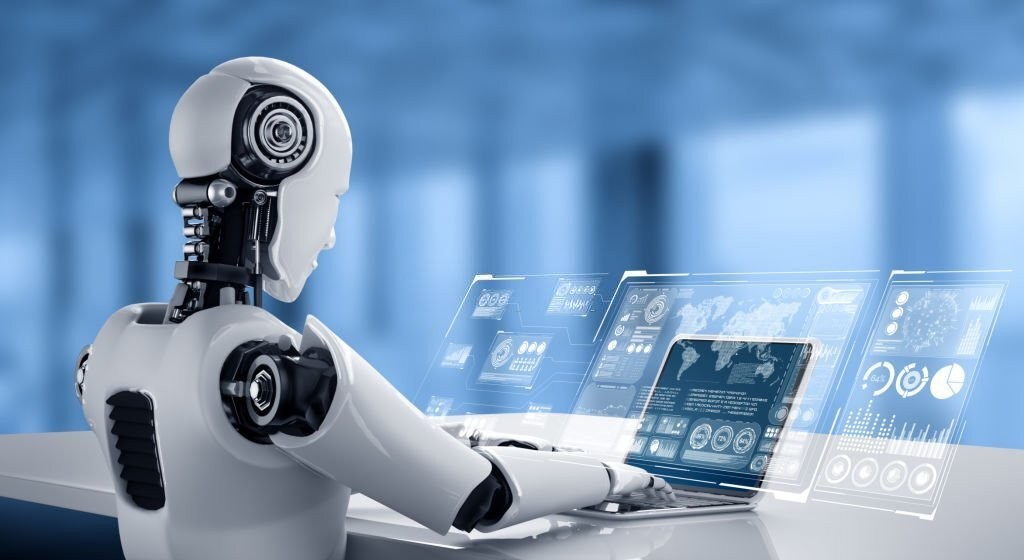In the ever-changing business technology industry, Robotics as a Service (RaaS) is becoming a game-changer, enabling companies of all sizes to leverage the power of robotics without the hefty upfront investment traditionally associated with robotic systems.
As you consider the future of your business operations, RaaS offers a flexible, scalable solution that can dramatically enhance efficiency and competitiveness.
This model allows you to access the latest robotic technology on a subscription or pay-as-you-go basis, addressing the key question: “How much does a robot cost?” Let’s explore how RaaS is reshaping how organizations approach business solutions and why it might be the right choice for you.
Understanding Robotics as a Service
Robotics as a Service (RaaS) is an innovative business model that delivers robotic automation on a service basis. This means you don’t need to purchase expensive hardware outright; instead, you can utilize advanced robotic solutions through a subscription or a usage-based fee.
RaaS providers manage the deployment, maintenance, and upgrading of robotic systems, significantly reducing the complexity and cost of robotic integration for businesses.
The key advantage here is flexibility. Depending on your operational needs and budget constraints, RaaS allows you to scale up or down without the risk and capital expenditure of owning robotic systems.
This is particularly appealing in industries where seasonal demand or rapidly changing technologies can render owned equipment obsolete or underutilized.
Cost-Effectiveness of RaaS
One of the most compelling aspects of RaaS is its cost-effectiveness. Traditional robotic systems can be prohibitively expensive, with costs ranging from tens of thousands to millions of dollars depending on complexity and capability.
In contrast, RaaS lowers the barrier to entry by spreading the cost over time and tying it to usage.
For you, this means reducing capital expenditure and the ability to budget more effectively, as RaaS payments can be categorized as operating expenses. This makes it easier to manage cash flow and improves financial flexibility by freeing up capital for other strategic investments.
Additionally, because the RaaS provider handles maintenance and updates, you avoid the ongoing costs of servicing and upgrading hardware, ensuring you always have access to the most advanced technology without additional investment.
Strategic Advantages of Adopting RaaS
Adopting RaaS can provide strategic advantages that go beyond cost savings. Firstly, it accelerates the integration of advanced technologies into your business operations.
With RaaS, you can deploy robotic solutions quickly and with minimal risk, enabling you to respond swiftly to market changes and opportunities. Moreover, RaaS enhances your business’s agility. In today’s fast-paced market, quickly adapting to new demands or operational challenges is crucial.
RaaS solutions can be deployed or reconfigured with far less downtime than owned equipment, allowing you to pivot operations efficiently and effectively. This agility can give you a significant competitive edge, enabling quicker innovation cycles and faster response times to customer demands.
Future Trends and Considerations in RaaS
As RaaS continues to evolve, staying abreast of future trends and considerations is vital for maximizing its potential. One key trend is the increasing integration of AI and machine learning into robotic systems, making them smarter and more adaptable.
This evolution will enhance the capabilities of RaaS offerings, enabling more complex and nuanced tasks to be automated effectively.
However, while RaaS offers numerous benefits, it also requires careful consideration, especially in terms of data security and privacy. As robotic systems often collect and process sensitive data, ensuring that your RaaS provider adheres to stringent security protocols is essential.
It’s also important to consider the long-term implications of dependency on a service provider for critical operational technology, including the risks of service disruptions or changes in service terms.
Conclusion
Robotics as a Service represents a paradigm shift in how businesses can implement and benefit from advanced robotic technologies. For you, embracing RaaS could mean not only significant cost savings but also enhanced operational flexibility and a stronger competitive position.
As you contemplate integrating RaaS into your business model, consider both the immediate benefits and long-term implications to ensure that this innovative service aligns with your strategic goals. Then, conduct a cost-benefit analysis to determine how your investment will fatten your bottom line.
By adopting RaaS, you’re not just outsourcing equipment; you’re investing in a partnership that will propel your business forward with cutting-edge technology solutions. Taking advantage of this opportunity to innovate and grow, you may find that RaaS is the key to finding new levels of efficiency and success in your business endeavors.
